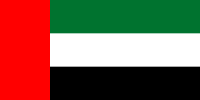
Photo from wikipedia
Abstract This article examines the social and political factors that contributed to the development of agriculture in the United Arab Emirates (UAE) from the 1940s onwards, expanding upon Jason Moore’s… Click to show full abstract
Abstract This article examines the social and political factors that contributed to the development of agriculture in the United Arab Emirates (UAE) from the 1940s onwards, expanding upon Jason Moore’s concept of the ‘commodity frontier’. Beginning in the mid-twentieth century, agricultural production emerged as a ‘secondary commodity frontier’ propelled by the primary commodity in the region—oil. The example of the UAE illustrates how the dynamics inherent in the primary commodity frontier can generate ‘secondary frontiers’. Furthermore, commodity frontiers are not necessarily exclusively motivated by market forces, as emphasized by Jason Moore. Indeed, the spread of agriculture in the UAE was not primarily tied to the export of any particular crop. Rather, the newly formed state after 1971, like colonial forces prior to this period, promoted agriculture in part to improve local people’s standard of living. Modern agriculture, furthermore, transformed local power structures and facilitated the country’s transition from a traditional to a modern state and its integration into a global capitalist economy.
Journal Title: British Journal of Middle Eastern Studies
Year Published: 2017
Link to full text (if available)
Share on Social Media: Sign Up to like & get
recommendations!